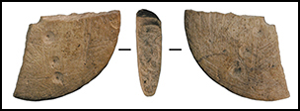Published online by Cambridge University Press: 18 February 2021

Scholars have long debated when the Neolithic began in China. Neolithisation, however, is a process rather than an event. It is more realistic to investigate the timing and nature of the socio-economic trajectory from mobile, microblade-using foragers to sedentary communities during the Palaeolithic–Neolithic transition in northern China. Here, the authors use artefacts from Shuidonggou locality 12 to demonstrate the socio-economic organisation of the site's inhabitants. They identify long-term site occupation by a large group exhibiting high levels of individual mobility. Comparative analyses with contemporaneous data indicate that the early stages of complex social organisation—a fundamental element of Neolithisation—emerged among microblade-using groups.